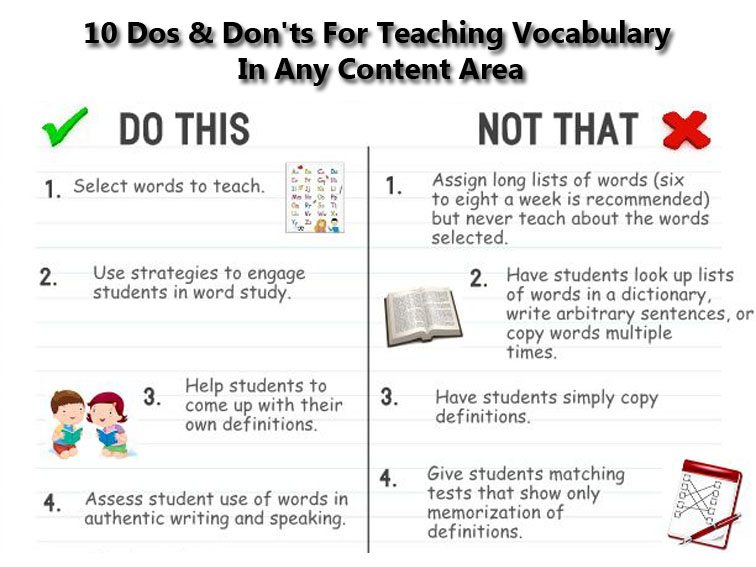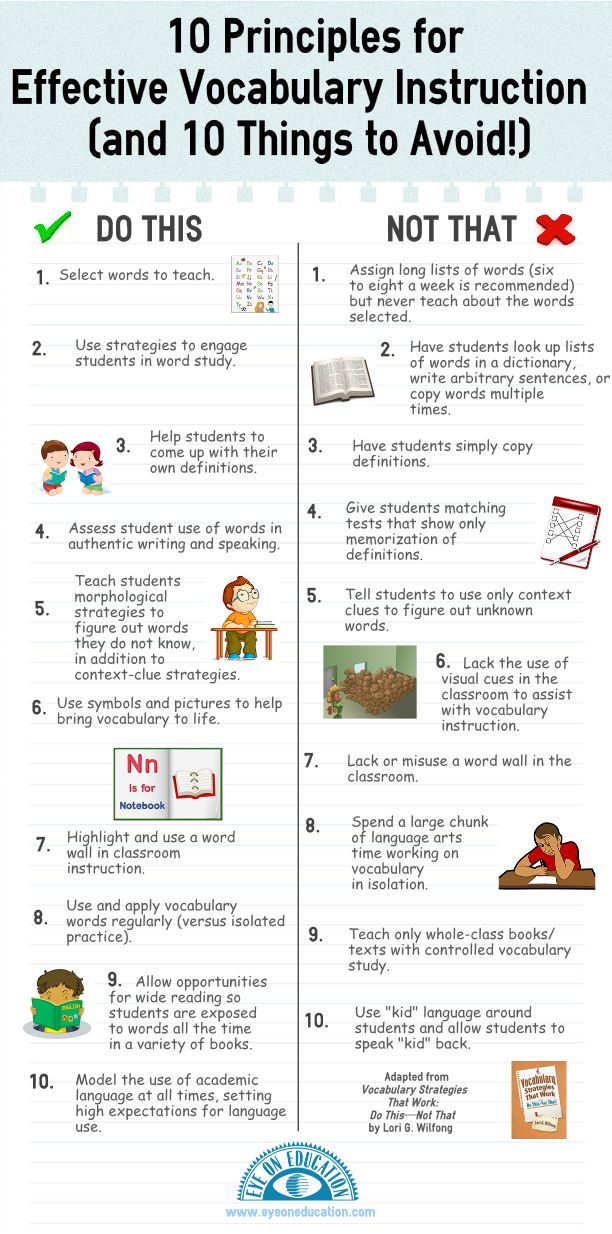
10 Dos & Don’ts For Teaching Vocabulary In Any Content Area
by TeachThought Staff
Teaching vocabulary is no longer strictly the domain of the English-Language Arts classroom.
While Robert Marzano has been promoting the instruction of academic vocabulary for years—and many school literacy plans have included reading and writing across the content areas for years—it is now a matter of standard and law, which makes it kind of a big deal.
While a small portion of non-ELA teachers may wonder (sometimes out loud) why they have to do “ELA teachers’ jobs and their jobs too,” this change has been a long time in coming. The above infographic from eyeoneducation.com offers some simple tips in a Dos-and-Don’ts format—brief enough to be practical and simple enough for even the most novice teacher to use.
Do This:
1. Select words to teach.
2. Use strategies to engage students in word study.
3. Help students to come up with their own definitions.
4. Assess student use of words in authentic writing and speaking.
5. Teach students morphological strategies to figure out words they do not know, in addition to context-clue strategies.
6. Use symbols and pictures to help bring vocabulary to life.
7. Highlight and use a word wall in classroom instruction.
8. Use and apply vocabulary words regularly (versus isolated practice).
9. Allow opportunities for wide reading so students are exposed to words all the time in a variety of books.
10. Model the use of academic language at all times, setting high expectations for language use.
Not That:
1. Assign long lists of words (six to eight a week is recommended) but never teach about words selected.
2. Have students look up lists of words in a dictionary, write arbitrary sentences, or copy words multiple times.
3. Have students simply copy definitions.
4. Give students matching tests that show only memorization of definitions.
5. Tell students to use only context clues to figure out unknown words.
6. Lack of visual cues in the classroom to assist with vocabulary instruction.
7. Lack or misuse a word wall in the classroom.
8. Spend a lot of language arts time working on vocabulary in isolation.
9. Teach only whole class books/ texts with controlled vocabulary study.
10. Use “kid” language around students and allow students to speak “kid” back.
